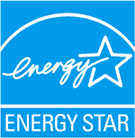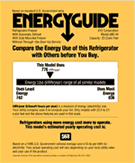Power Meters -- Residential
In This Guide
Get Rebates,
Incentives & Services
Introduction
Power meters can help you save money and energy by showing you when and where electricity is used in your home. While most homes are equipped with electricity meters to measure total energy use and determine your monthly bill, these meters are intended to supply information to utility providers, rather than customers. Power meters and power use monitors, on the other hand, are specifically designed to allow customers to track and observe their energy consumption, enabling them to save energy. When used properly, power meters and monitors can save users 5-20% or more on their energy bills.
Technology Options
Power meters come in several varieties, and differ in price and level of sophistication, but they can be grouped into two main categories: plug-in meters, which measure individual appliance consumption, and the more complex power use monitors, which measure whole-home energy consumption and often offer additional features.
Plug-in Meters:Meters to measure appliance power usage directly at the outlet.
Plug-in electricity meters, sometimes called "plug load" meters, measure the energy used by individual appliances, helping homeowners to identify appliances that consume excessive electricity or stand-by power. The meter is plugged into an outlet, and the appliance to be measured is plugged into the meter. The meter then measures the kilowatt-per-hour consumption of the appliance and provides that information on an LCD screen. Some meters provide the option to convert kilowatt measurements into cost (according to local utility rates) so users can see the price of running a particular appliance for a given amount of time.
Power Use Monitors:Devices to monitor total power consumption in your home.
Power use monitors measure whole-home energy consumption and provide real-time feedback to homeowners on a central display. Using sensors, which attach directly to the electric main, the monitor sends a signal to its remote display device, and the display shows users how much energy their home is consuming at that moment. The monitors help homeowners see when electricity is being consumed and enable long-term analysis of energy use. Homeowners can also use the monitors to determine which appliances are using the most energy by turning appliances off or unplugging them and watching the home's total electricity use change.
Power use monitors also allow customers to limit their energy use during critical or peak pricing hours. Some systems display the current cost of electricity being used, as well as other handy information such as greenhouse gas emissions generated, indoor temperature and humidity measurements, and cumulative displays of weekly, monthly, and annual energy use.
Some power use monitors come equipped with the ability to control appliances remotely or pre-set different energy use 'scenarios', so that thermostats and appliances will be adjusted automatically according to your schedule. These models often use small wireless communicating devices (common types include INSTEON/X10, ZWave, and UPB) which plug into individual appliances to create an energy profile for the entire home. Depending on the system, users can view and adjust home energy usage remotely, and may choose to receive notifications when lights or appliances are left on. Some systems, including systems from Universal Devices and Mi Casa Verde, are programmed to receive Flex Alerts wirelessly, and will automatically turn off lights and appliances to save energy.
Efficiency Benefits
When used properly, plug-in meters and power use monitors can help save homeowners 5-20% or more on their energy bills.
Plug-in meters help users identify appliances that consume excessive amounts of energy and/or stand-by power, enabling them to use inefficient appliances less often, turn them off or replace them. Plug-in meters also encourage conservation by raising awareness, and offer an engaging way to teach family members about electricity.
Like plug-in meters, power use monitors also help customers locate problem appliances, but they also offer other advantages. By providing information on whole-house power consumption, power use monitors can help homeowners benchmark their electricity use, track improvement, and monitor daily activity to see when appliances have been left on. Models that allow users to control electricity use remotely or set up multiple energy-use scenarios can facilitate even more savings and help reduce wasted energy. Finally, real-time feedback helps consumers shift their energy use to non-critical times, helping to prevent blackouts and fight global warming.
Manufacturers
Kill-a-Watt and Watts Up Pro are two of the main manufacturers of plug-in meters.
Cent-a-Meter, Power Cost Monitor, and The Energy Detective, are options for basic power use monitors.
Manufacturers of more advanced systems, which feature remote control options and energy use scenarios include Universal Devices, and Mi Casa Verde with their system, Vera.
Purchasing Tips
|
||
Emerging Technology
Google is currently developing a no-cost software technology, Google PowerMeter, which will provide users with home electricity consumption information online. The software will work by receiving information from utility smart meters and energy management devices and displaying the information on a user's iGoogle homepage. The technology will serve as a tool for customers to monitor their energy use in real-time, much like the various power use monitors.











